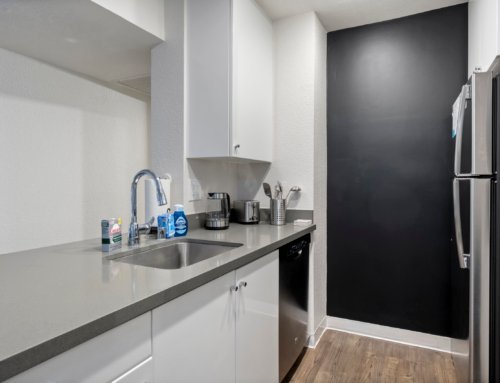
How Real Estate Photographers Can Increase Their Earnings with Professional Editing Services
In the world of real estate photography, capturing the perfect shot is just the beginning. While high-quality photos are essential for any property listing, it’s the editing process that truly brings out the beauty of a space and makes a significant impact on a property’s appeal. Professional photo editing can elevate your work, make your photos stand out, and, most importantly, help you increase your earnings as a real estate photographer.
If you’re a photographer looking to expand your skill set and generate more revenue, adding professional editing services to your portfolio is a powerful strategy. In this blog post, we’ll explore how real estate photographers can benefit from offering editing services, the essential editing techniques you should master, and how to price and market your services effectively to attract more clients.
1. Why Professional Editing Services Matter in Real Estate Photography

Real Estate Photographer
Enhancing Property Appeal
No matter how skilled you are with a camera, some properties simply require a little extra attention to detail during post-production. Real estate editing allows you to adjust the lighting, remove distractions, and enhance features that might not be visible at first glance. By brightening up dark corners, adjusting exposure levels, and emphasizing architectural details, you can make a property look its best and capture its true potential.
For example, if you’re photographing a room with large windows that let in natural light, professional editing can help balance the exposure to avoid overexposed windows while keeping the interior bright and well-lit. This level of refinement makes your photos more appealing to potential buyers and ensures that every detail is captured in the best light.
Correcting Imperfections and Distortions
In real estate photography, minor imperfections like lens distortion, color mismatches, or unwanted objects in the frame can detract from an image’s impact. Editing allows you to fix these issues and present an idealized version of the property. For example, wide-angle lenses are often used to capture large spaces, but they can sometimes create distortion, making walls appear curved or bent. Through professional editing techniques, these distortions can be corrected to provide a more natural and accurate representation of the space.
Moreover, editing tools allow you to remove distracting elements, such as clutter, wires, or other items that may not align with the property’s intended appeal. This ensures your photos look clean and focused, showcasing only the most important aspects of the property.
2. Essential Editing Techniques for Real Estate Photographers
If you want to offer professional editing services, there are several key techniques every real estate photographer should master. These techniques not only enhance your images but also streamline your workflow, allowing you to provide high-quality photos in a timely manner.
Exposure and White Balance Adjustment
Real estate photography often involves capturing images in varying lighting conditions. Adjusting exposure is essential to ensure that your photos have the right brightness levels and details. White balance adjustments help eliminate color casts that may make the property look unnatural. Whether you’re shooting in bright sunlight or indoor lighting, getting the correct exposure and color balance ensures that your photos look vibrant and realistic.
HDR (High Dynamic Range) Processing
Many professional real estate photographers use HDR processing to create images that accurately represent both bright and dark areas of a room. This technique combines multiple exposures of the same shot, allowing you to capture the full range of light in a property. By blending these images, you can create photos that show the interior in sharp focus, even in areas where light may vary.
For instance, when shooting a room with a lot of natural light coming through large windows, HDR processing ensures that the light inside the room and the view outside the window are both properly exposed, resulting in a balanced and professional image.
Sky Replacement and Virtual Staging
A clear, blue sky can make any property look more inviting, but sometimes weather conditions or the time of day can create less-than-ideal skies. Sky replacement is an essential editing tool for real estate photographers. By digitally swapping in a bright, sunny sky, you can give your photos a professional touch and make the property look more appealing.
Additionally, virtual staging allows you to digitally furnish empty properties, helping potential buyers envision how a space can be used. This technique can be especially valuable when photographing vacant homes, as it gives prospective buyers a clearer idea of how the space will function and feel.
Straightening and Cropping
Ensuring your photos are properly aligned and proportionate is crucial for real estate photography. Uneven lines or crooked walls can distract from the property’s appeal. Editing tools allow you to straighten and crop images to ensure that all elements in the frame are perfectly aligned. This level of precision conveys professionalism and helps clients feel confident in the quality of your work.
3. How to Price and Market Your Editing Services

Real Estate Photographers
Pricing Your Services
When adding editing services to your photography business, it’s important to establish clear pricing that reflects the quality and complexity of the work involved. Some photographers charge per image, while others may offer packages based on the number of images or the scope of editing required. For example, basic editing (like exposure adjustment and color correction) may be priced lower than more advanced services such as HDR processing or sky replacement.
Consider offering tiered pricing packages that allow clients to choose the level of editing they need based on their budget and project requirements. For example:
- Basic Editing: Includes exposure correction, white balance adjustment, and basic cropping.
- Advanced Editing: Includes HDR processing, lens distortion correction, and basic retouching.
- Premium Editing: Includes all advanced techniques like sky replacement, virtual staging, and full image retouching.
Marketing Your Editing Services
Once you’ve established pricing for your editing services, it’s time to market them effectively. You can start by promoting your editing capabilities on your website and social media platforms, showcasing before-and-after examples to demonstrate the value you provide. Highlighting your editing services in your portfolio can attract clients who specifically need high-quality editing for their property listings.
Additionally, consider networking with real estate agents and property managers to offer editing services for their existing photo libraries. Many agents have access to great photography but may need assistance with the post-production process. Offering your services as a way to enhance their photos can be a great way to expand your client base.
4. The Benefits of Adding Editing Services to Your Photography Business
Increased Revenue
By offering editing services, you not only provide added value to your clients but also create new revenue streams. Many photographers charge a premium for advanced editing techniques, allowing you to increase your earnings per project. This is especially true if you target high-end clients who require polished, magazine-quality images.
Streamlined Workflow
Offering editing services in-house can streamline your workflow by giving you complete control over the final product. You won’t need to outsource editing or wait for someone else to finish the job, which can lead to quicker turnaround times and more satisfied clients. With the right tools and techniques, you can efficiently edit photos and deliver high-quality results in a timely manner.
Attracting a Broader Client Base
As the demand for professional real estate photography continues to grow, having editing services as part of your offering will help you attract a wider variety of clients. From agents and property developers to homeowners looking to sell, every type of real estate client can benefit from high-quality photo editing. This versatility allows you to expand your reach and take on more diverse projects.
Conclusion
Professional editing services are a powerful addition to any real estate photographer’s portfolio. By offering high-quality editing techniques, you can enhance the appeal of properties, correct imperfections, and provide a polished final product that meets the expectations of your clients. Adding these services not only increases your revenue but also strengthens your reputation as a full-service real estate photographer. With the right tools, pricing strategies, and marketing efforts, you can grow your photography business and stand out in a competitive market.
Contact me for the best real estate photo editing service.






